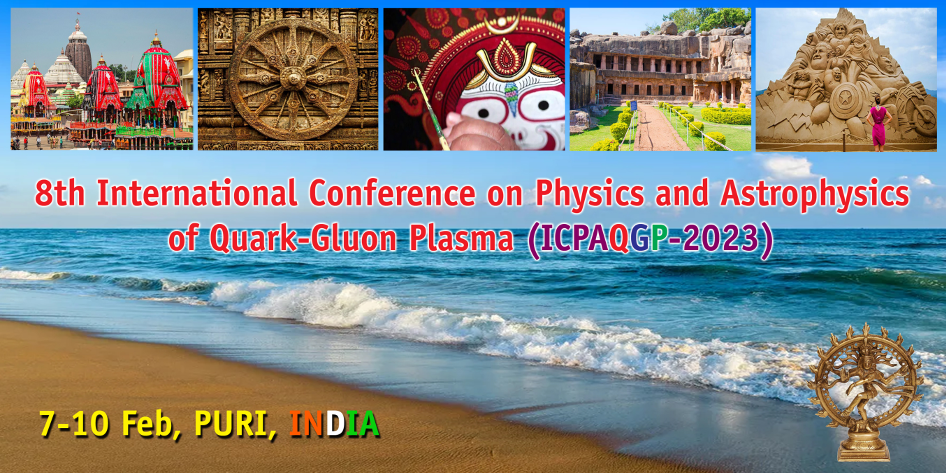Short-lived resonances, like $K^{*0}$, are useful tools to study particle production mechanisms and the properties of the hadronic phase at the late stage of heavy-ion collisions. Properties of the resonances are expected to be modified due to the interaction of their decay daughters with the hadronic medium via the rescattering and regeneration processes. The particle yield ratios ($K^{*0}/K,...
In ultra-peripheral collisions (UPCs) where two relativistic nuclei pass one another at a distance more than twice the nuclear radius, quasi-real photons from one nucleus may interact via a virtual quark-antiquark pair with gluons from the other nucleus and form short-lived vector mesons (e.g., $\rho^{0}$, $J/\psi$, $\phi$). Lorentz-boosted electromagnetic field of a relativistic nucleus can...
STAR collaboration has observed more strange hadrons in Cu+Cu collisions compared to Au+Au collisions at RHIC energy[1], $\sqrt{s_{NN}}$=200 GeV. We calculate the yield of $K, \Lambda, \Xi, \Omega$ using momentum integrated Boltzmann equation. Following a microscopic approach by considering possible hadronic interactions the strange hadron yields are calculated for different centralities of...
The Beam Energy Scan (BES) program at Relativistic Heavy-Ion Collider (RHIC) aims to map the QCD phase diagram. Finite-temperature lattice QCD calculations suggest a smooth crossover transition from normal nuclear matter to the Quark-Gluon Plasma (QGP) phase at high temperature and vanishing baryon chemical potential. Several QCD-based models suggest there is a first-order phase transition...
Lattice QCD has provided accurate information at zero baryon density. Lattice QCD is also used at small baryon densities using Taylor expansion of pressure. The agreement between QMHRG and Lattice QCD for pressure and second order chiral susceptibility is good. However there are significant differences between QMHRG and Lattice prediction of higher order susceptibilities. Also at finite...

